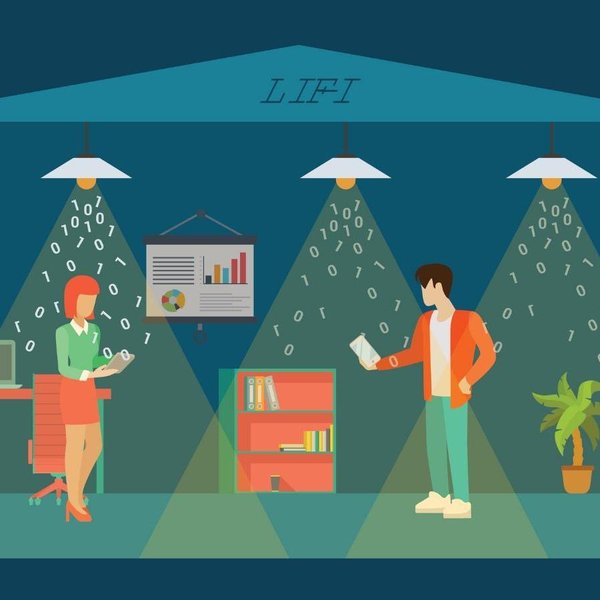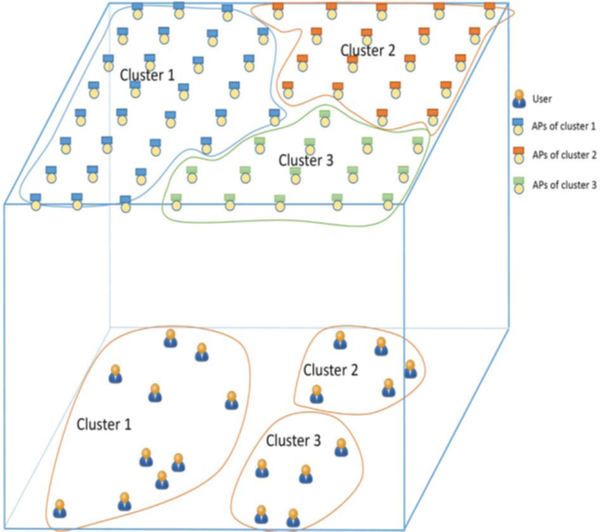New proposed technology improvements in future communication networks
June 10, 2020 | ResearchA research team, consisted of Dr. Salam Zummo (Supervisor), Dr. Anas Salhab (Co-Supervisor) and graduate student Muhannad Obeid, has implemented a project that proposed a new technology to improve the efficiency of visual light communication. As a result, (4) patents have been submitted to the Center for Technology and Innovation Transfer at KFUPM for registration in the United States Patent and Trademark Office, and 4 research papers have been published in prestigious scientific journals in addition to participation of four conference papers.
The evolving explosion in high data rate services and applications will soon require the use of untapped, abundant unregulated spectrum of the visible light for communications to adequately meet the demands of the fifth-generation (5G) mobile technologies.
The traditional Radio-frequency (RF) networks are proving to be limited to cater the future demand of high data rate services. Visible light communication (VLC) has emerged as a great potential solution, either in replacement of, or complement to, existing RF networks, to support the projected high-rate data communication demands. Compared to RF networks, VLC networks provide higher data rates, larger energy efficiency, lower battery consumption, and smaller latency. Despite these prolific advantages, VLC network faces many challenges such as channel estimation and shadowing effects, small coverage area, and the noise or interference that may be generated by nearby lighting systems, which must be resolved in the near future to achieve a full standardization and to be integrated to future wireless systems.

Dr. Anas Salhab said that a new joint load balancing (LB) and power allocation scheme was presented for a hybrid VLC/RF system consisting of one RF access point (AP) and multiple VLC APs. Second, a joint AP association and power allocation algorithms for energy efficiency (EE) maximization in standalone VLC networks were proposed along with a new algorithm for users’ clustering and APs’ association based on the user-centric (UC) design. Third, The research introduced a new transmission scheme based on the cooperative non-orthogonal multiple access (NOMA) scheme to improve the sum-rate and fairness in VLC systems.
In first phase, a hybrid VLC/RF network has been optimized for maximizing the system capacity along with a new joint load balancing (LB) and power allocation scheme for a system consisting of one RF AP and multiple VLC APs. With help of a new efficient algorithm that finds the optimal dual variables after formulating them in terms of each other and also provides faster convergence and better performance than the traditional sub-gradient method. The numerical results demonstrate that the proposed algorithms improve the system capacity and system fairness with fast convergence.

The second phase of the project studied a standalone VLC network where the number of APs was much more than the number of users by proposing new algorithms for users’ clustering and then associating all the APs to the clustered users. The numerical results demonstrate that the proposed algorithms significantly improved the Energy efficiency compared to the existing work.
Dr. Anas Salhab stated that the project solves such a difficult non-convex optimization problem using an iterative approach, which relies on inner convex approximations, and compensates for the used approximations using proper outer-loop updates. We further consider solving the special cases of the problem, i.e., maximizing the sum-rate, and maximizing the total harvested-energy, both subject to the same constraints. Numerical results highlight the significant performance improvement of the proposed algorithms, and illustrate the impacts of the network parameters on the performance trade-off between the sum-rate and harvested-energy.

Due to its ability to support applications of very high data rates of possibly several Giga-bits per second, VLC communication represent a strong candidate to be used in several applications in our daily life such as in houses, hospitals, companies, schools, offices, traffic lights, sports areas, military purposes. This makes the proposed power allocation, cell formation, and load balancing protocols attractable and of a noticeable importance for several wireless communications operators and service providers in the Kingdom and even in the world. The mentioned systems and applications above are expected to include many users and multiple APs, and this will need efficient user/APs selection protocols such as the proposed ones in this project. The proposed new protocols will be satisfying the needed QoS of users with guaranteeing an adequate lighting quality. Two patent disclosure forms have been submitted to the Technology Transfer and Innovation Center at KFUPM for a possible registration in the USPTO.
This work has been conducted in collaboration with Prof. Mohamed-Slim Alouini of King Abdullah University of Science and Engineering and Dr. Hayssam Dahrouj of Effat University in Jeddah. One outcome of this project is paper, published in a highly reputable journal of impact factor 20.2 [Name of the Journal]. This paper explores all the optimization techniques, previously reported in literature, that aim at improving the VLC network performance.
For more details about the project, kindly visit the following links:
Joint optimization of power allocation and load balancing for hybrid VLC/RF networks
DC-Bias and Power Allocation in Cooperative VLC Networks for Joint Information and Energy Transfer
New Algorithms for Energy-Efficient VLC Networks With User-Centric Cell Formation



